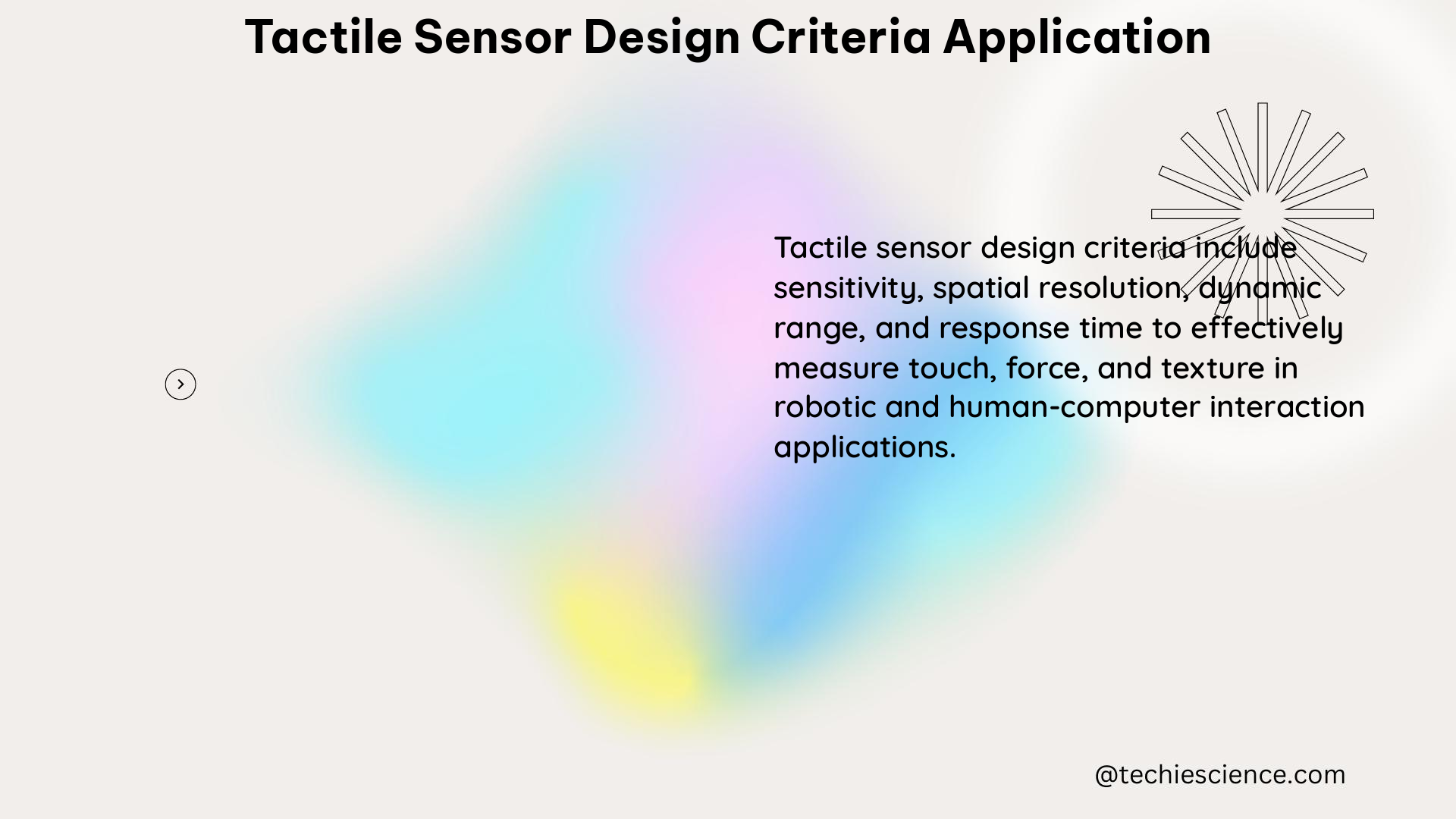Tactile sensor design criteria application involves various measurable and quantifiable factors that are crucial in developing and implementing tactile sensors for specific applications. These factors include force and pressure measurements, sensor technology, linearity, accuracy, spatial resolution, and calibration methods. Understanding these factors is essential for creating effective and reliable tactile sensing systems.
Force and Pressure Measurements
In tactile sensing, the force and pressure distributions across an area between two surfaces in direct contact are measured. Pressure is a scalar value defined as the force over a specific area, while force is a vector with a particular magnitude and direction. Traditional single-axis force measurement devices, such as load cells, can isolate and measure one or more of the three directional components by concentrating the contact to a single, well-controlled point.
However, when considering thin and flexible tactile pressure sensors, complex measurements must be made at the surface interaction boundary while minimizing the effect and intrusion of the sensor itself on the overall application. This is achieved by using advanced sensor technologies that can accurately capture the force and pressure distributions across a larger surface area.
Sensor Technology

Tactile sensing technologies are based on measuring one of two fundamental electrical properties: resistance or capacitance. The development of capacitive-based tactile pressure measurement technology began in the Harvard Robotics Laboratory in the early 1990s, focusing on enabling robots with the “Sense of Touch”.
The capacitance (C) of a simple planar capacitor is given by the following equation:
C = (ε₀ * εᵣ * A) / d
Where:
– ε₀ is the permittivity of free space (8.854 × 10⁻¹² F/m)
– εᵣ is the relative permittivity of the dielectric material
– A is the area of the parallel plates
– d is the distance between the parallel plates
By designing tactile sensors that leverage this capacitive principle, engineers can create highly sensitive and responsive pressure measurement systems. These sensors can be integrated into a wide range of applications, from robotics and prosthetics to medical devices and industrial automation.
Linearity
Linearity quantifies the quality of calibration by comparing the calibrated output of each element within a sensor under a series of known loads to the performance of an ideal sensor system. An ideal sensor would feature a linearity of 100%, while high-quality tactile sensors, such as those from Pressure Profile Systems (PPS), typically feature linearity of 99.5% or higher.
Maintaining a high degree of linearity is crucial for ensuring accurate and reliable pressure measurements across the sensor’s operating range. This is particularly important in applications where precise force and pressure data are required, such as in robotic manipulation, medical diagnostics, and advanced manufacturing.
Accuracy
Accuracy is the difference between the true value of the measurand (the quantity being measured) and the measured value indicated by the instrument. The accuracy of a tactile sensor is dependent on the overall measurement application and setup, specifically parameters such as contact mechanics and the operating environment.
Factors that can affect the accuracy of a tactile sensor include:
– Surface roughness and deformation
– Temperature and humidity variations
– Electromagnetic interference
– Sensor drift and hysteresis
To ensure high accuracy, tactile sensor designers must carefully consider these factors and implement appropriate calibration and compensation techniques. This may involve the use of advanced signal processing algorithms, temperature and humidity sensors, and other supporting technologies.
Spatial Resolution
Spatial resolution is dependent on the physical size of the individual sensing elements and the pitch between such elements, defining the element density over an area. Spatial resolution dictates the minimum physical features that can be detected and captured over an area.
PPS capacitive sensors are designed to minimize the gap between physical elements, and the unique compliant layers cause the load to distribute across the gaps, effectively enabling continuous coverage over the active sensing area. This high spatial resolution allows for the detection of fine details and the mapping of complex pressure distributions.
The spatial resolution of a tactile sensor can be expressed in terms of the number of sensing elements per unit area, such as elements per square centimeter (el/cm²). High-resolution tactile sensors can have spatial resolutions exceeding 100 el/cm², providing detailed pressure information for advanced applications.
Calibration
Calibration is a crucial aspect of tactile sensor design criteria application. Calibrating and verifying the performance of a tactile sensor is a challenging undertaking and requires careful consideration. Calibration white papers, such as the one from PPS, provide insights into the considerations, complexities, and methodologies of tactile pressure measurement.
Key aspects of tactile sensor calibration include:
– Establishing a reference standard for pressure measurement
– Applying known loads and pressures across the sensor’s active area
– Characterizing the sensor’s response to these inputs
– Developing calibration models and algorithms to convert raw sensor data into accurate pressure values
Proper calibration ensures that the tactile sensor provides reliable and consistent pressure measurements, which is essential for its successful integration into various applications. Ongoing calibration and validation are also necessary to maintain the sensor’s performance over time and under changing environmental conditions.
Conclusion
In summary, tactile sensor design criteria application involves a comprehensive set of measurable and quantifiable factors that must be carefully considered when developing and implementing tactile sensors for specific applications. These factors include force and pressure measurements, sensor technology, linearity, accuracy, spatial resolution, and calibration methods.
By understanding and addressing these design criteria, engineers and researchers can create highly effective and reliable tactile sensing systems that can be deployed in a wide range of industries, from robotics and prosthetics to medical devices and industrial automation. Continuous advancements in sensor technology, signal processing, and calibration techniques will further enhance the capabilities of tactile sensors and expand their applications in the years to come.
Reference:
- Tactile Sensor Design Criteria Application White Paper
- Design and Calibration of a Force/Tactile Sensor for Dexterous Manipulation
- Machine Learning for Tactile Perception: Advancements, Challenges, and Opportunities

I have a background in Aerospace Engineering, currently working towards the application of Robotics in the Defense and the Space Science Industry. I am a continuous learner and my passion for creative arts keeps me inclined towards designing novel engineering concepts.
With robots substituting almost all human actions in the future, I like to bring to my readers the foundational aspects of the subject in an easy yet informative manner. I also like to keep updated with the advancements in the aerospace industry simultaneously.